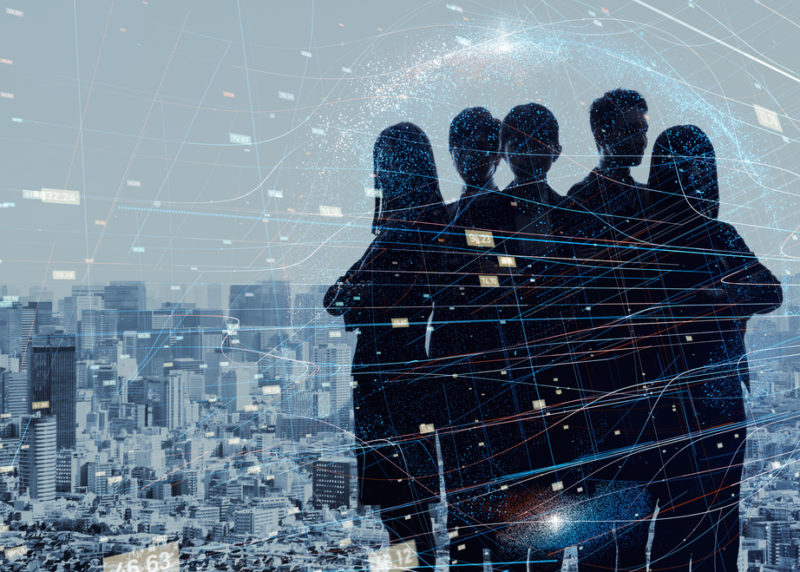
Article by Helen Masters, Senior Vice President and General Manager, Infor Asia Pacific
The state of the workforce is rapidly changing: a study from Georgetown University shows there will be 55 million vacant openings in the US job market by 2020. Further analysis explains this is due to the lack of formal technology training, paired with an abundance of occupations that require heightened knowledge of advanced machinery, like artificial intelligence (AI). For Thailand, according to a study on the employment status of the population in September 2019 by the National Statistical Office, out of 37.72 million people in the labor force, up to 3.85 hundred thousand are unemployed. Moreover, as compared to the same period in 2018, the number of unemployed has increased to 12,000 people.
While many are quick to vilify AI, machine learning (ML) and other smart technologies, they are in fact vital in helping to solve this job conundrum. AI is a valuable tool that can search, vet and identify the right candidates for the right jobs, autonomously handling mounds of workforce planning labor and leaving human resource executives available to give their attention to more “human” aspects of their occupations, such as feedback, management and more.
AI capabilities, when added onto the enterprise technology stack, can ensure that manual tasks, such as data collection, are no longer on an employee’s plate. Instead, they can focus their time on value-added activities, and in all, help to maximize human work potential.
Some workplace areas are poised to be not just affected, but improved, through the integration of smart technology. These include:
Vetting. When a job is posted online, questions can quickly come flooding in. Even before having to look at a resume or supplemental materials, AI can utilize natural language processing (NLP) capabilities to automate responses to potential candidates. Perhaps one individual is interested but wants to hear more about the role, and another wants to apply but can only interview over the phone due to location restrictions – AI can easily read these notes and reply using approved language and answers.
Sourcing. Online job databases, such as LinkedIn and Indeed, can often hold the perfect candidate, but sifting through the massive pool can be time consuming and unproductive. By programming key words and phrases, automation technology can scan online job boards, looking for these words that help to encapsulate if an employee is equipped with the right experience to succeed in that role.
Recruiting. With automation, the earliest stages of recruitment can be easily handled by machines. Take, for instance, resume and application review. With the same presets as above, AI can scan these documents and make preliminary candidate assessments based on a person’s past experiences, skillsets, and so forth. Once these boxes are checked, workers can then take over, focusing on evaluating behavior, temperament, interest, and other factors that contribute to a successful employee.
While many fear the role of HR executive will be eliminated, or at least, seriously limited, by the integration of technology, in fact, the opposite is true. Once the above, more manual tasks are handled by technology, that leaves ample time for managers and HR departments alike to focus on more value-added aspects, such as:
Onboarding. The onboarding process is not only multifaceted, but also extremely individualized. HR leaders can develop a streamlined, personalized approach to onboarding new employees that encapsulates the employee’s previous experience and skillset, personality, and learning behaviors, among other aspects. Providing a thorough onboarding process helps the employee become acclimated to their new position and responsibilities as quickly as possible.
Providing (and listening to) feedback. While AI in the enterprise can automate responses for quick inquiries, it cannot replace the human touch needed when discussing larger, more complex issues. With the time consuming, mundane tasks taken care of by machine, HR leaders and executives have freed up space in their schedule for one-on-one time with workers, making sure requests and feedback are discussed and heard, both for and by the employee.
Problem solving. Problems and issues in the workplace can be critical, yet sticky, situations to solve. These types of circumstances involve not only the type of complex problem solving that only a human can execute, but oftentimes, a sensitivity that is difficult or impossible for a machine to emulate. Expanding the amount of time that HR leaders can focus on these more complicated issues will help all parties arrive at better, more thought-out solutions.
When it comes to recruiting and training employees, using AI will prove helpful in workforce planning across all sectors. And while much of the media narrative about integrating AI and other smart technologies into the workplace paints the situation as dire, the opposite is often true. If used in the appropriate venues, the machinery can help to support and elevate the workforce beyond what they are currently achieving – ultimately, maximizing their human potential.




